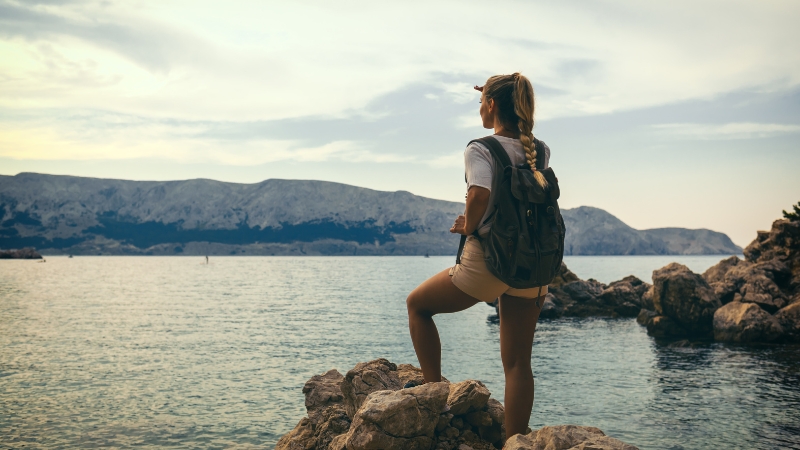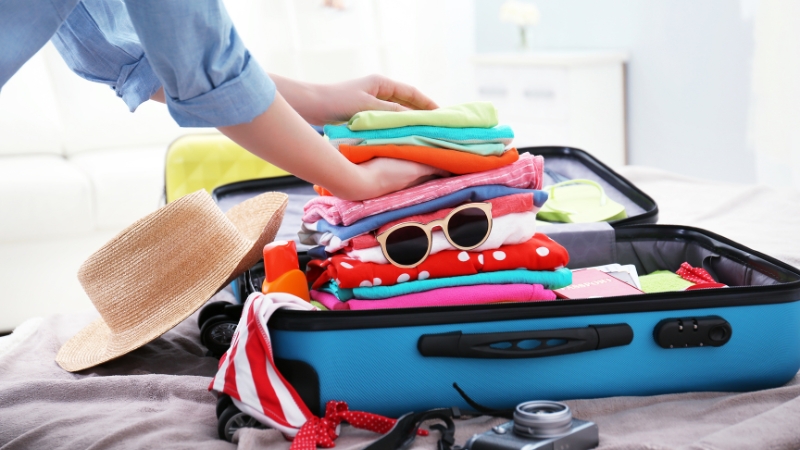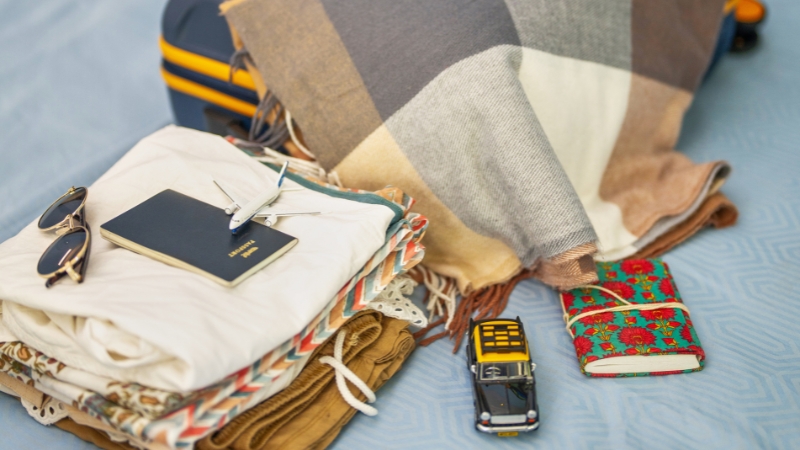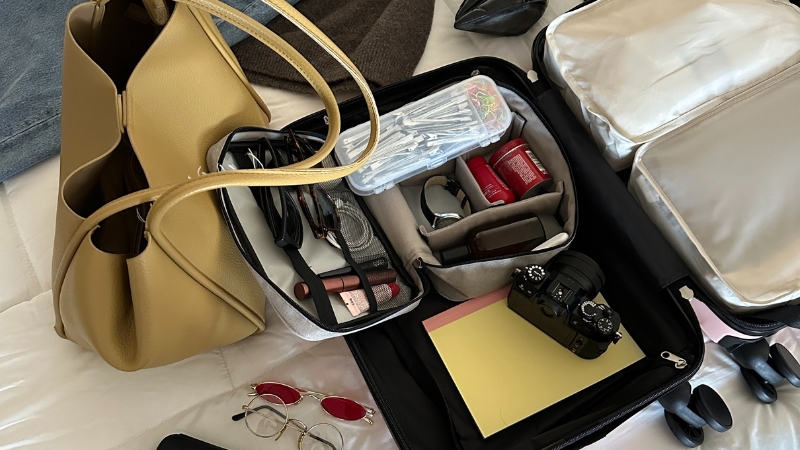The most effective way to keep your essentials safe without dragging around a full suitcase is to prioritize only what you truly need and organize it into compact, secure carriers, such as a dedicated travel case. This approach combines practicality with safety.
Instead of being weighed down by unnecessary items, which increases your risk of theft, misplacement, or damage, you travel lighter, move faster, and know exactly where everything important is.
Carrying less doesn’t mean being unprepared. It means focusing on the right essentials, storing them intelligently, and giving yourself peace of mind.
Why Carrying Less Makes You Safer

Many travelers assume that bringing more makes them more secure, but the opposite is often true. A full suitcase:
By contrast, carrying only your true essentials keeps them close, visible, and organized. When you can reach your passport, phone, or medication within seconds, you remove stress and reduce risk.
Defining What Essentially Are
Essentials vary depending on the purpose of your trip, but the truth is that the core items rarely change. Strip away the “what ifs,” and most people only need:
- Identification and documents: passport, ID, travel tickets, boarding passes.
- Payment methods: debit/credit cards, a small amount of cash, and digital wallet access.
- Technology: smartphone, charger, power bank, headphones.
- Health and hygiene basics: prescribed medications, sanitizer, tissues, and lip balm.
- Keys: home, car, or hotel card.
- Comfort extras: sunglasses, a pen, or a compact notebook.
When you put this list on paper, you realize it’s much smaller than you imagined. Most essentials fit into one organized pouch or slim bag.
The Problem With Full Suitcases
A suitcase has its place, especially on long trips. But for daily movement, whether sightseeing, commuting, or attending a meeting, it becomes more of a liability than a help.
Suitcase vs. Compact Essentials Approach
Factor
Full Suitcase Style
Compact Essentials Approach
Security Risk
High – items buried, bag often out of sight
Low – items stay close, easy to track
Mobility
Bulky, slows movement in crowds
Lightweight, easy to carry anywhere
Accessibility
Delays in finding documents or devices
Immediate access to every essential
Attention from thieves
Attracts pickpockets and scammers
Less visible, more discreet
Stress Level
Constant worry about luggage
Confidence, everything is in one place
Travelers who switch to compact essentials often say it feels like a “weight lifted off their shoulders” — both physically and mentally.
How to Carry Essentials the Right Way
View this post on Instagram
The key isn’t only cutting down what you carry, but also carrying it intelligently. Tossing items into random pockets or a loose tote isn’t safe. Essentials should always be in a dedicated, structured organizer where each item has its place.
That’s where a well-designed travel case makes a difference. A good one provides:
With everything secure in one compact case, you’re never fumbling or worrying that something fell out.
Situations Where Packing Lighter Pays Off
- Airports and Border Crossings – Instead of searching through a stuffed suitcase at security, your passport and boarding pass are ready in seconds. This not only saves time but also reduces the chance of losing documents in the shuffle.
- Public Transportation – Pickpockets look for distracted travelers with multiple bags. A compact essentials kit kept close to your body is harder to target.
- Business Trips – Carrying a suitcase to a meeting looks clumsy. Pulling a clean travel case with your ID, cards, and notebook looks professional and efficient.
- Exploring a City – Dragging a roller bag across cobblestones or crowded sidewalks is exhausting. Essentials in a slim pack let you move naturally and comfortably.
How to Store Different Essentials
Essential Item
Best Storage Spot
Why It Works
Passport & ID
Zippered compartment in travel case
Prevents loss or damage
Credit cards & cash
RFID-protected slot
Blocks skimming, keeps cash secure
Phone & charger
Padded pocket
Prevents scratches and cable tangling
Medications
Small pill case inside the organizer
Quick access during emergencies
Keys
Side pocket with a clip
Easy reach without rummaging
Extra Safety Tips for Essentials
Carrying light doesn’t mean being careless. It means planning. These strategies add another layer of security:
- Duplicate records: Keep digital scans of important documents in secure cloud storage.
- Divide your valuables: Don’t keep all cash in one spot; split it between compartments.
- Use neutral designs: Bright or flashy bags attract attention; choose discreet looks.
- Set a nightly routine: Each evening, check that your essentials are all accounted for.
- Stay mindful in crowds: Even with compact carry, always keep items in front-facing pockets or crossbody straps.
Different Options for Carrying Essentials

Here are some popular methods, each with its advantages:
Compact Carry Options
Type of Organizer
Best For
Benefits
Travel case
General travelers & professionals
Organized, discreet, professional look
Sling bag/crossbody
City exploring, hands-free comfort
Easy access, stays close to the body
RFID wallet
Minimalist, short outings
Protects cards, very compact
Tech pouch
Digital nomads with multiple devices
Cables, power banks, and gadgets are safe
Choosing the right option depends on your lifestyle and trip length, but the principle remains the same: a small, structured carrier beats a bulky suitcase every time.
The Psychological Advantage of Traveling Light
Safety isn’t just about physical items. It’s also about peace of mind. When you know your essentials are organized in one compact case, your stress levels drop.
You don’t waste energy double-checking your suitcase or worrying about theft. Instead, your focus shifts to enjoying the trip, handling work efficiently, or simply moving through your day with ease.
This mental clarity is often overlooked, but it’s one of the biggest advantages of carrying less.
Conclusion

Keeping your essentials safe without carrying a full suitcase isn’t about sacrifice – it’s about intentional packing and smart organization. With the right travel case or compact bag, you can secure documents, money, electronics, and personal items in a way that keeps them close, discreet, and easy to manage.
A lighter load means fewer worries, less stress, and greater freedom. You move through airports, cities, or daily commutes with confidence, knowing everything important is safe and within reach.
The truth is simple: the less you carry, the safer you are – as long as you carry it smart.
Hello, my name is Harper Barton. The only thing I love more than travelling is writing about it. Sounds strange doesn’t it? But yeah, I adore writing and sharing my experiences about what I have experienced during my travels. Since I am a person who loves being a part of the community, I often write about local festivals with the goal of popularizing outside just small communities they come from.







